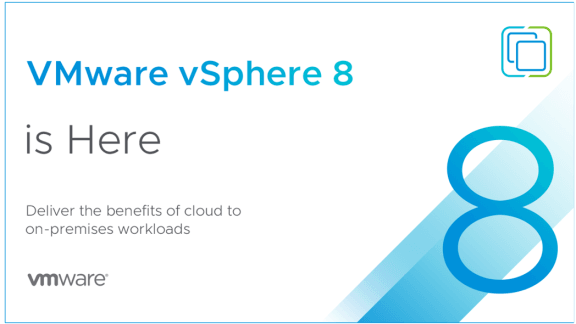With the ESXi 8.0 release now available for download, many may consider upgrading ESXi 7 to 8. Let’s look at the different ways for upgrading ESXi 7 to 8.

ESXi 8 is not free anymore. Broadcom is actively driving a shift to a subscription model for the company's business following the completion of its acquisition of VMware in 2023, and eliminating the free version of ESXi prompted customers to opt for a subscription service.

vSphere 8.0 supports up to 8 vGPUs per VM – a 2x increase compared to vSphere 7 U3, allowing you to run more and more powerful virtual machines, and perform tasks faster. In addition, there are more new vSphere 8 features.
So, do you need to upgrade to vSphere 8 from vSphere 7 immediately? It depends. But in order to avoid accidents, it is always essential to be prepared to upgrade to ESXi 8 and vCenter 8 in advance. Next, this article will provide 3 ways to upgrade to ESXi 8, and answer some common questions.
Before you initiate an upgrade to vSphere 8, there are some maintenance and management activities you should perform to your vSphere environment.
✓ Check compatibility: vSphere 8 does not support any components of version 6.5 or older. Therefore, you may first need to upgrade some components to the minimum version 6.7 and check for these incompatibilities before the upgrade continues.
✓ Health check: If an environment is not in a healthy state, errors can occur which might require a rollback.
✓ SSO Domain Topology reconfiguration: You can choose to automatically perform external Platform Services Controller convergence, or to manually perform converge or domain repointing tasks prior to upgrade.
✓ Remove vCenter HA: deactivating and removing vCenter HA simplifies the upgrade workflow and makes things easier to troubleshoot in the event the upgrade fails.
✓ Backup your environment: It is critical to back up your vSphere environment before upgrading, including ESXi VMs, ESXi and vCenter configurations, Platform Services Controller, distributed virtual switches, etc.
Before upgrading to ESXi 8, it's essential to create a backup for data protection. AOMEI Cyber Backup is an agentless VM backup software supports both paid and free versions of VMware ESXi. It also allows you to batch backup multiple VMware ESXi VMs, and centrally monitor data protection of all these VMs, freeing you out of the heavy and laborious administrative tasks. More »
Before you upgrade ESXi 7 to ESXi 8, you should first check the ESXi requirement of ESXi 8 including hardware, Compatibility requirements etc. I will upgrade to ESXi 8 in the following 3 ways:
Note: If you upgrade hosts managed by vCenter Server, you must update vCenter Server before you upgrade the ESXi hosts. If you do not upgrade your environment in the correct order, you can lose data and lose access to servers.
First, you should download ESXi 8.0 ISO image before upgrading ESXi 7 to 8.
1. Access to your VMware ESXi web client (ESXi 7.0), right-click Manage from the left inventory and select Enter maintenance mode.
2. You could mount the ISO in your remote console, configure the boot to boot from ISO and reboot your server.
The ESXi 8.0 boot begins, booting into the installer/upgrader. Then follow the menu and select the disk where ESXI is installed.
3. After the upgrading process completes successfully, the installer will ask you to remove installation media and then reboot.
You can use vSphere Lifecycle Manager as part of vCenter Server for hosts managed at the cluster level by vCenter.
1. Launch vSphere Client and log in to the vCenter Server, then navigate to the properties for your vSphere cluster, click the Updates tab. Then click Image > Setup Image.
2. Select the ESXi 8.0 version from the drop-down list on the ESXi version. Click SAVE.
3. Confirm to continue, finish image setup.
4. Check compliance at the cluster level. We need to Remediate the hosts. Here, I am clicking the Remediate All button.
5. The Review Remediation impact dialog will pop up. Click the Start Remediation button.
The hosts begin remediating. After a few minutes, you will see the ESXi host reboot and will boot into ESXi 8.0 after the upgrade process from vSphere Lifecycle Manager.
Next, we can upgrade our existing ESXi host using the command line. This is easily accomplished with only a couple of commands, including the following:
When you see "The update completed successfully”, you need to reboot ESXi host.
The process of upgrading to ESXi 8 is simple. For the most part, many will try doing this in lab environments as most will probably be holding off in their production environments. However, if you want to upgrade your ESXi host to 8.0 version, you must backup VMware ESXi in case of disaster.
Direct upgrade to VMware ESXi 8.0 is not supported on ESXi 6.5.x. You can upgrade ESXi 6.7 and 7.0 hosts directly to ESXi 8.0.
No, it is not recommended by VMware to have a ESXi Host of a higher build number to vCenter Server. vCenter Server version must be same version or higher than ESXi Host version, or the build number has to be higher or same version of ESXi Host build Number.
Yes, you can update ESXi to the latest build from an online bundle. This method caters to users with a free ESXi license who can't access the offline bundles.
Yes, you can revert to a previous version or build of ESXi using the Direct Console User Interface (DCUI).
Upgrading your existing ESXi hosts to ESXi 8.0 is fairly straightforward and can be accomplished in various ways, including using the ISO, command line, and vSphere Lifecycle Manager. Hopefully, this quick tutorial on the processes involved with each method will help to quickly get your lab environment up to date, running the latest ESXi 8.0 release.